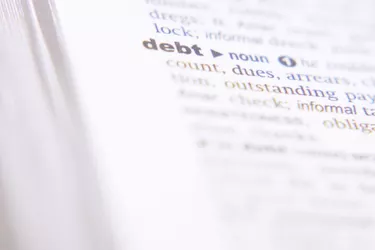
Companies that are funded with debt and equity have a mixed cost of capital. But it's helpful to know what a company's cost of capital would be if it were financed with all equity and no debt. The unlevered cost of capital measures this by showing the required rate of return without the effects of leverage, or debt. This is the same as the expected overall return on a company's assets.
Calculate Unlevered Beta
Video of the Day
Step 1
Type a company's ticker symbol into the box next to "Get Quotes" and hit "Enter" to get its stock quote on Yahoo's!Finance website. Find beta listed under the Key Statistics section of the stock quote. Beta is the same as Bl, or levered beta, and must be converted into unlevered beta to calculate unlevered cost of capital.
Video of the Day
Step 2
Enter a company's ticker symbol in the box next to "Quote" on Morningstar's website then hit "Enter" to get its stock quote. Find the company's tax rate listed under the Key Ratios section of the stock quote. Use the trailing 12-month (TTM) rate.
Step 3
Locate D, which is total debt, on the company's balance sheet. Use total liabilities for total debt.
Step 4
Find E, which is market value of equity, under the Key Statistics section of the company's stock quote on Yahoo's!Finance website. Use market cap for market value of equity.
Step 5
Take the variables and input them into a calculator with the unlevered beta formula, which is Bu = Bl/(1 + (1 - tax rate) (D/E)). For example, a company with a levered beta of 1.2, a 35 percent tax rate, $40 million in total debt and a $100 million market cap has an unlevered beta, or Bu, of 0.95: 1.2/(1 + (1 - 0.35) ($40 million/$100 million)) = 0.95.
Calculate the Capital Asset Pricing Model With Unlevered Beta
Step 1
Find rf, which is the risk-free rate, on Yahoo's!Finance website listed under Bonds in the Investing section. Use the 10-year Treasury yield, which provides the rate of return an investor could earn on an investment with no risk.
Step 2
Estimate the market risk premium, which is the excess return investors require for an average risky stock over the risk-free rate. This equals the expected market return minus the risk-free rate, or rm - rf. The market risk premium changes along with investor risk tolerance and typically ranges from 4 percent to 8 percent.
Step 3
Use the variables and calculator to calculate the capital asset pricing model (CAPM), which is Ra = rf + Bu(rm - rf). Ra equals return on assets, which is the same as unlevered cost of capital. For example, a company with an unlevered beta of 0.95 would have an unlevered cost of capital of 11.2 percent when the risk-free rate is 3.6 percent and the market risk premium is 8 percent: 0.036 + 0.95(0.08) = 0.112, or 11.2 percent.
Tip
Because debt values change with interest rates, the market value of debt can be substituted for balance sheet debt in the unlevered beta calculation.
The marginal tax rate, which measures the rate at which a company’s next dollar of income will be taxed, can be substituted for the trailing 12-month tax rate in the unlevered beta calculation.